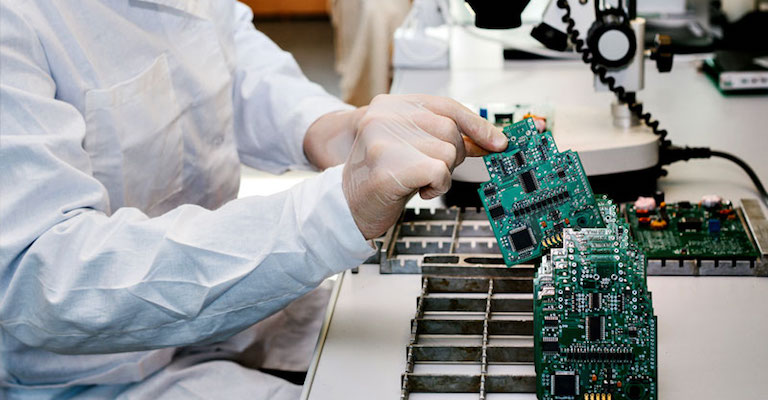Just-in-Time Production (JIT) is a phrase that gets thrown around a lot in the manufacturing industry, and for a good reason. JIT delivery describes a process in which a manufacturer can greatly increase efficiency to meet On-Time-Delivery (OTD). The idea behind just-in-time production goes back to Ford Motor company’s early days. Although they took their time to implement it. It refers to producing goods only according to what is needed. The idea is to streamline the manufacturing process, which includes labor, materials and time.
For a high turnover industry such as the printed circuit board (PCB) industry, JIT delivery is crucial. The following are some of the key features of JIT.
- Smaller deliveries based on immediate needs
- Production floors made to be very flexible
- Rapid machine setups to streamline production runs
- Receiving inspections eliminated with supplier certification of quality
- Halting of production as soon as OTD is completed
A More In-Depth Look at JIT Delivery
Although Ford was one of the first companies to suggest using just-in-time manufacturing, it was another automobile company that made it famous. That company is Toyota, and they achieved it in the 1970s. They set in motion a plan to produce automobiles by strictly adhered to demand. This meant doing away with unnecessary inventory that takes up space and cost; therefore, minimizing waste. Seeing Toyota’s success, it was only a matter of time before other companies followed suit.
There are three basic principles that JIT rests on, they are:
- Management of production
- Management of quality
- Management of employees
Management of Production
Production efficiency is not a one-time process. It requires constant tweaking. The idea is to keep an eye on minimizing waste until value-added manufacturing is achieved.
Management of Quality
The name says it all. Managing high-quality standards require frequent checks and feedbacks. It is imperative for those who are responsible to constantly seek ways to improve quality to stay ahead of the competition.
Management of Employees
Employee management can be the trickiest one to achieve and it falls under the responsibility, of the human resources department. The goal of the HR department in the context of JIT is to ensure that employees are grouped according to their skill level and minimize competition among the employees. A frictionless atmosphere between employees is vital for just-in-time to work well.
The Nuances of JIT Delivery
Even though the term on-time-delivery may sound self-explanatory, there is more to it than that, as the following points show.
- Dictated by commodity class
- Usually follows calendar date
- Following promised date
- Synchronizing supplier and purchaser data
Commodity Class
Strictly speaking on-time-delivery refers to a range of dates. This, in turn, is classified according to the value of the product which is classified as A, B, and C with A being the highest value. Class A products are delivered from five days before and zero days after, class B from five days before and one day after and class C from 10 days before to five days after the due date.
Calendar vs Working Days
Really speaking, it doesn’t matter which dates are followed if purchaser and supplier are on the same page. However, most customers assume delivery according to calendar days.
Promised Dates
Promised dates, in contrast to required dates, is when the supplier promises delivery on specific a date. A required date is when the customer needs it by. Best practices require vendors to stick with promised dates.
Data Synchronization
There is always the risk of supplier and purchaser having different OTD expectations. This can be avoided when periodic synchronization of expectations are done.
Imagineering’s Approach
For Imagineering, JIT delivery is at the forefront which allows us to focus on cost, quality, and speed while being able to compete globally. With our domestic and offshore manufacturing facilities and state-of-the-art production capabilities, we offer aerospace quality at standard prices.
From prototype to production, we have the ability to manufacture to class 3 standards—the same ones required by medical, military, and aeronautics applications.


